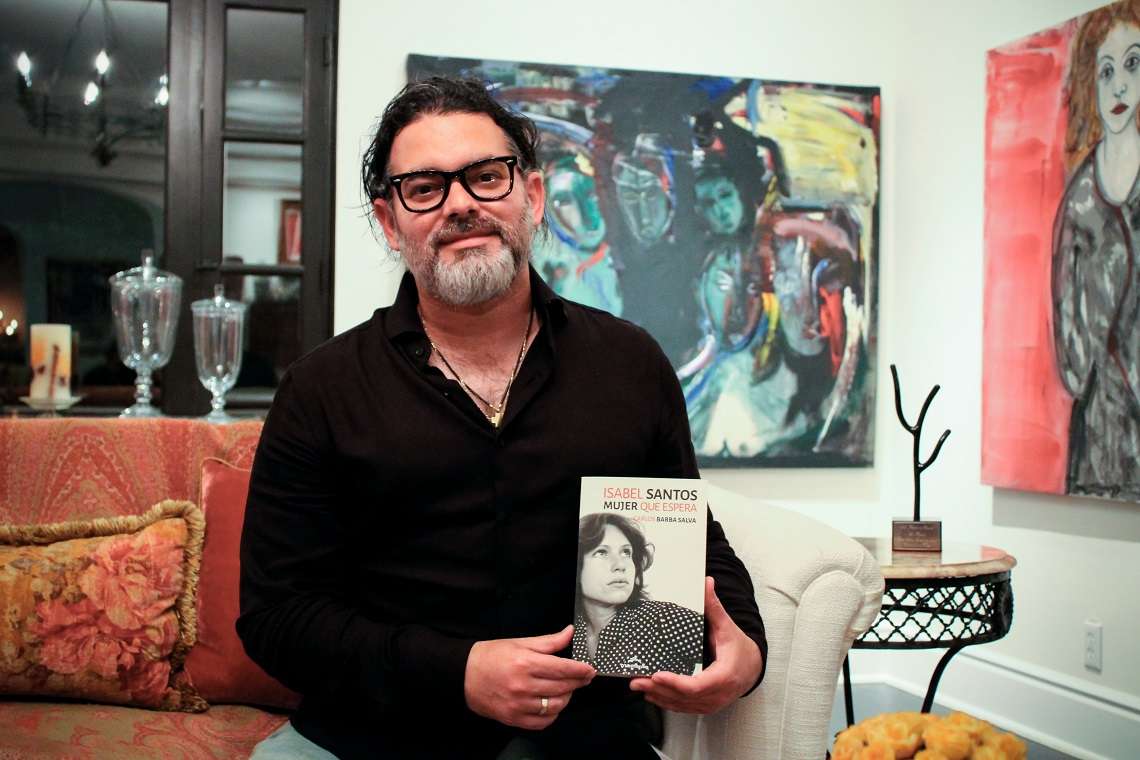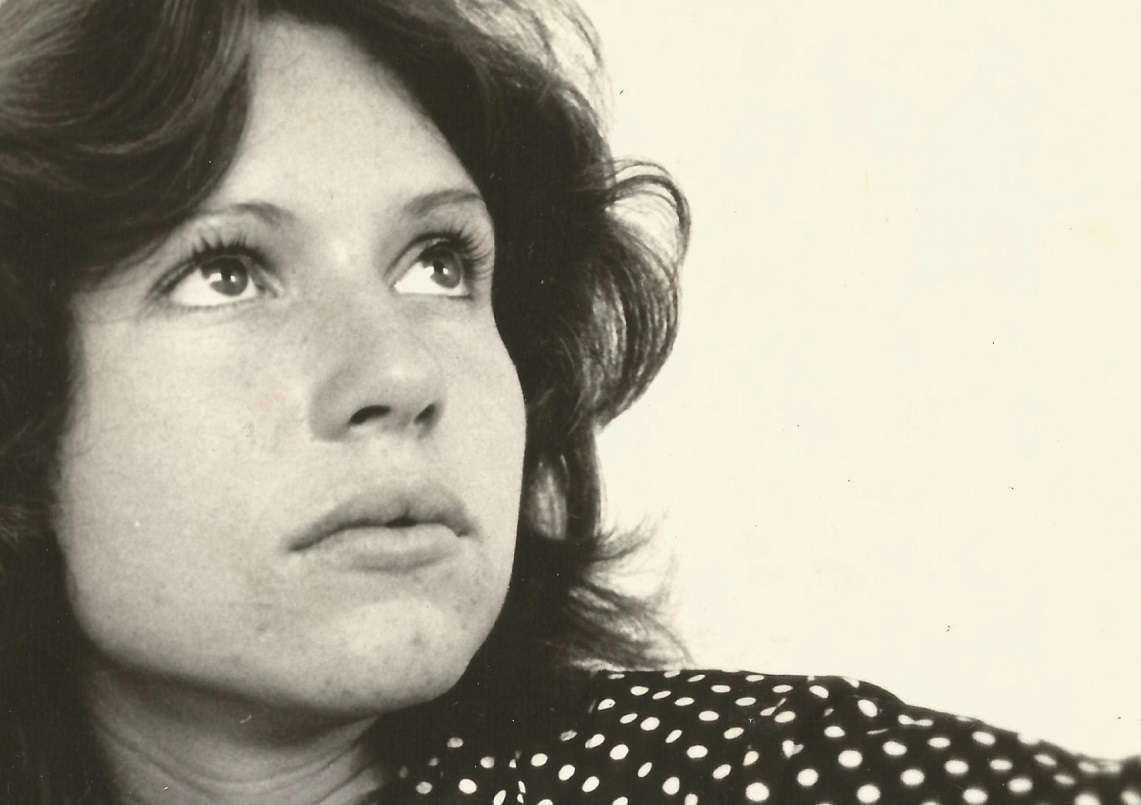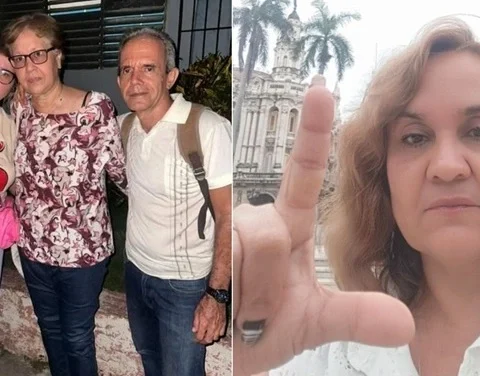Almost two decades ago, Carlos Barba (Guantanamo, 1978) delved into the artistic and personal career of the notable Cuban actress Elizabeth Santos. with his documentary waiting womanfrom 2005, the then new filmmaker showed the public, in about an hour, internalities and evocations of the protagonist of memorable films such as clandestine and life is whistling.
Seventeen years later, he already seasoned filmmaker —author of a dozen documentaries and two fiction short films— retraced his steps to bring us closer to the actress, this time in a book. Elizabeth Santos. waiting woman is the title of the 224-page volume, published by D’McPherson Editorial and available on amazon since December of last year.
With the audiovisual as a starting point, the director, who lives in Los Angeles, United States, goes beyond what was filmed years ago to offer readers new accessories and revelations about the actress. About this work and the iconic figure to which it is dedicated, OnCuba He spoke with Carlos Barba. An invitation not only to read his book, but also to review the valuable cinematography and the entire career of his protagonist.
How did the book project come about? What motivated you to make the leap from audiovisuals to writing to address the figure of Isabel Santos?
The idea was not originally mine. Sandra González, the editor of D’McPherson Editorial, and a friend of many years, proposed it to me after the documentary was broadcast. waiting woman on the tv show In a certain way, directed by Luciano Castillo. With an insight and a kindness that I am very grateful to her for, she suggested that I turn the audiovisual into a book, at the time of the seventeenth anniversary of its premiere on the big screen, during the 3rd. Gibara International Poor Film Festival.
We were then in the middle of the pandemic and while the COVID-19 insisted on disappearing the faces through the masks, luckily my hands were still free and I put them to work. Knowing that Isabel Santos would be 60 years old in 2021, I thought of the book as a tribute not only to her enormous career, but also to her existence, dedicated to cinema for more than 40 years.
Imagine, in her first appearances for Cuban television, Isabel arrived at the studios in the uniform of the National School of Art. She means that practically from High School and from her first year at the ENA, she became part of the image of a country and dazzled from her first leading role, when she played a Jehovah’s Witness girl, in the soap opera steps up the mountain (1981). And so, with the first bars of her career, but not before reviewing her childhood in the middle of a batey, very close to the old Central Senado, in Camagüey —where under a mosquito net she began to dream of being an actress—, this book.
What are the communicating vessels of the book and the documentary? Is it a transcription of what was filmed then or an update and expansion of that work?
The work was hard, it took us almost two years. Although the book obviously has communicating vessels with the audiovisual that precedes it, it was not only the transcription of the documentary. What could not be in the body of the film due to time was also added, as well as an introductory text where I try to recall how we shot independently in Santiago de Cuba.
It also includes a leafy annex with his complete filmography and updated technical sheets of his work on television, cinema, theater and radio. In addition, the poems he uttered in his films, reviews, words from colleagues, articles, the file and theme song by Liuba María Hevia, posters, a photographic dossier of the filming and premiere of the documentary, as well as stills from his films throughout the pages, according to the chapter. The prologue is by the Cuban filmmaker Fernando Perezwho has run it since clandestine (1987) to Nelsito’s world (2022).
What did you set out to achieve? How would you introduce the book to readers?
I tried to go as deep as possible into Isabel’s life and work. When you have the book in your hand, you can’t get carried away by those 13 ounces it weighs, because in it you find yourself from the naive young woman who had breakfast every day with Dennis Hopper in Rio de Janeiro, to the woman who stood in the filming of clandestine to silence before a phrase that did not feel and give us that unforgettable ending.
The book, for example, tells about the roles that he was offered and could not do. About the danger she had to face in a hot air balloon in Life is whistling. About how her neighbors know that she is preparing a character because of the music that leaks from her house, and about the conflicts of being a single mother and going out when she has to do nudes. She also tackles the challenges of holding multiple movies on her shoulders, with a role in nearly every scene, and navigating both film and television work, all the while talking about memorable titles for the latter medium like La Botija (1990) and Cold air (1999).
In addition, she delves into her work with directors Juan Carlos Tabío, Jesús Díaz, Danilo Lejardi, Gerardo Chijona, Luis García Berlanga and Humberto Solás, the latter who introduced her to digital cinema. All this and more is available to readers in the book.

What was it like filming/writing about Isabel Santos?
Amazing. I was always surprised by her —and it continues to happen to me today— that she is an actress who does not speak from that place. You might think that a profession as colorful as yours could serve as a center of conversation, but no. And I tell it in the book: when I met her, incredibly, Isabel “erased” her characters, she let go of the plane of fame to get on another and land in her person.
The impression I had then was of a woman who represented and lived emotions in a very special way. She did not suffer beyond what the director asked her to. It’s the magic in representing a truth and then going home. From there we became friends. And so many years later, all this was very good for the book, because the stories are told with freshness, with the emotion that even surprised her when she read it for the first time.
And it has worked very well, because the documentary waiting woman has become the reflection of the book Elizabeth Santos. waiting woman, but with new nuances, looks. Interiors, misunderstandings, reconciliations are told for the first time; It tells of the shooting of our documentary, stopped by the “local factors” while we were preparing for the “Action!” in a small municipality. About the joys in front of an accomplished character, or the recognitions that came early. Whether for an actor or for a spectator, for a strange, but I think successful combination, the book manages to offer each one what they are looking for.
What did Isabel tell you when you told her that you were writing a book about her? And what did she tell you when she got to see it finished?
I have been lucky that Isabel trusts me, she knows how I work and that everything that has been derived from waiting woman It has been something, from my point of view, very authentic, very special. And so it was this time.
I first thought of the book as a kind of surprise gift for his 60th birthday, so at first I didn’t tell him. But as the time for publication got closer—and because it was a project that took a while—I told him about it. She, logically, was happy and began to wait anxiously for the result.
Finally, when it was ready, I sent it to Havana through a person, and thanks to the exchange that the networks and video calls allow, we have talked about the book, their impressions of it and the memories, good ones, and others not so good, that has brought you to read it. From the very introduction, in which I tried to make a chronology of our steps in Santiago de Cuba shooting the documentary, and of everything else that is included in the pages of the book, which are, ultimately, about her.
Seeing her already with her copy in her hands, and finally being able to read it, made me very happy, because she is the protagonist of the story. Knowing that what you have done is liked by the person to whom that work is dedicated, that they feel identified with it, is something very gratifying. Capturing those emotions, those stories, in this case not only related to the documentary, but also to her films and everything else that appears in the book, and knowing that she is satisfied with the result, is something that makes me feel very happy and satisfied too.

How did the change from the audiovisual register to the written letter turn out for you? How did you live that exit from your comfort zone?
I would say that, more than a departure from my comfort zone, I experienced it as a visit to another creative zone. Whenever I connect with a topic and have something to contribute using this format, I think I’ll come back to it. Years ago, for example, I have been putting together a book on Humberto Solás, always starting from the feature film that, also as a tribute, I made about him. In addition to my conversations with the teacher throughout the films we worked on together, and other films where he tells me how he directed his greatest hits. But the comfort zone in this profession is a mystery. Each movie or book is different, and there is no choice but to enter the ring.
Why go back to Isabel Santos, almost 20 years after your first biographical approach?
I am passionate about Isabel, I applaud how she excels in each role, how she becomes another person, with a lot of truth. She has an acting and intellectual autonomy that is growing, and it seems to me that she has done, within what she could, what she wanted, and brilliantly.
Without getting deep, I’m going to confess that I like the way he walks. When I’ve directed it, it’s the only thing I haven’t asked him to change. In clandestine It is not appreciated much for the time, but in the other films it is, especially in lovely lies (1991), life is whistling (1998) and honey for oshun (2001). It may seem childish, minor, but I think that in the cinema you also have to know how to walk, and she, without a doubt, knows how to do it very well.
Besides, that’s what she hasn’t stopped doing: getting on with her work. I’m sorry that your moving image can’t appear in the book, that those who discover it reading these pages miss that show. But after reading Elizabeth Santos. waiting womansurely we will have to return to his films.














